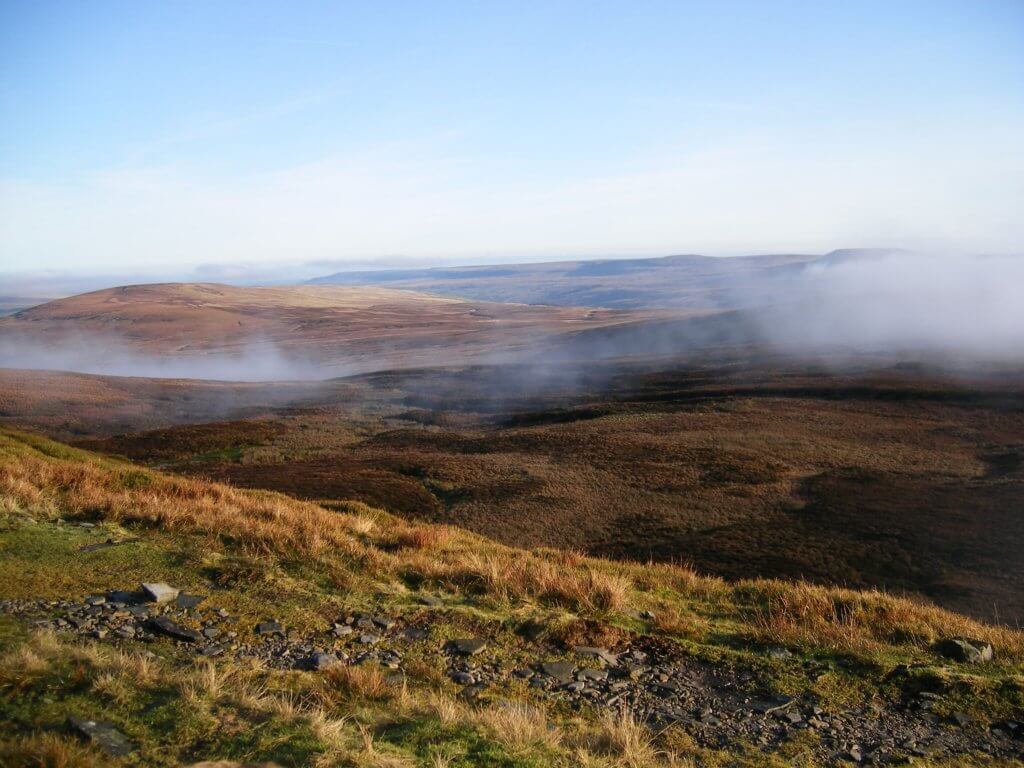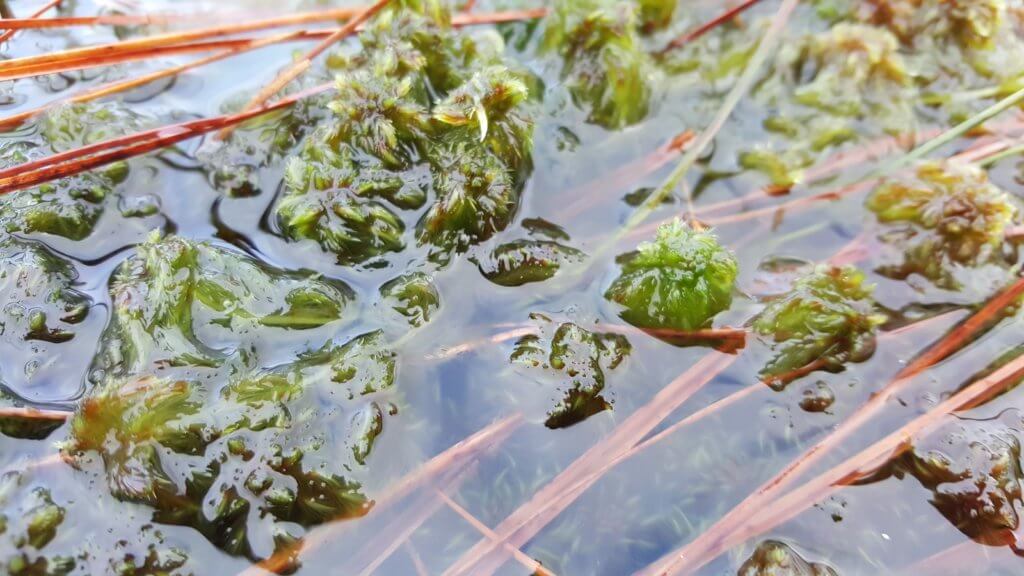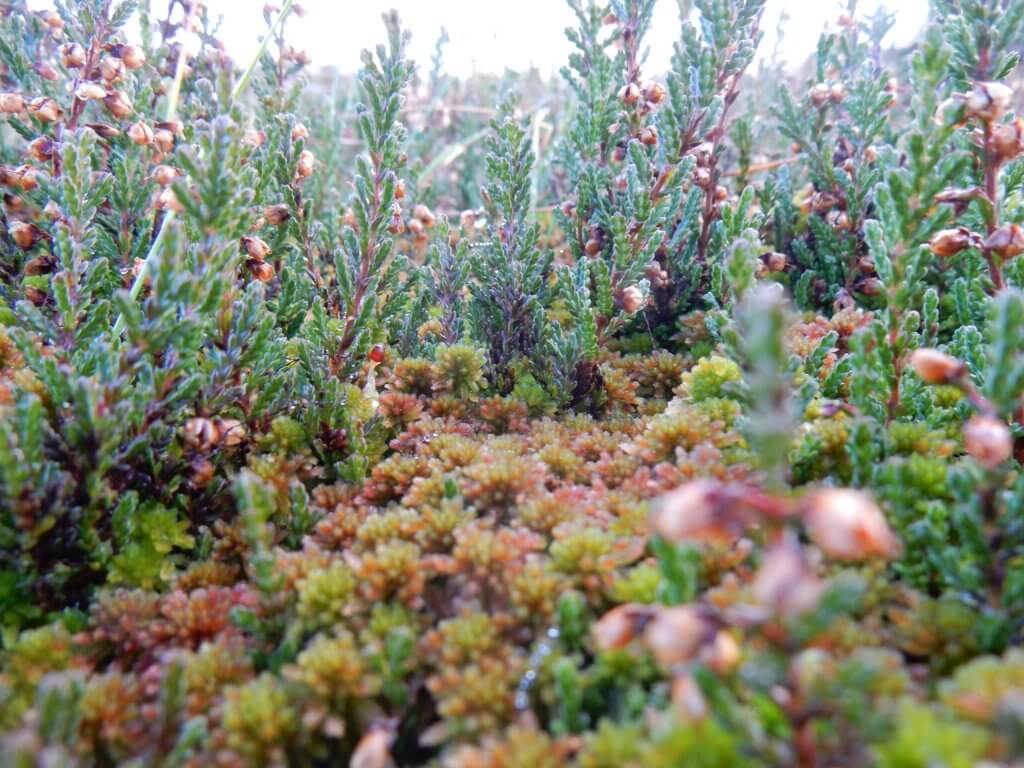Give Peat a Chance and Save the World
Yorkshire Wildlife Trust are launching a national appeal to restore the ‘brown and broken’ Yorkshire peatlands to their former glory in an effort to combat climate change and flooding.

Buckden Pike. Photo: Gordon Haycock
Peatlands are the most iconic of Yorkshire’s landscapes, but 80% of them are currently degraded, many severely so. What should be wet, green and wild is instead dry and cracked. Damaged peatlands not only pose a threat for wildlife, they also contribute to large-scale flooding and global climate change.
‘Most people don’t realise what a terrible situation this is, and not just because healthy peatlands are such joyous landscapes full of colour and life‘ said Rob Stoneman, CEO of Yorkshire Wildlife Trust. ‘The truth is that peatlands do so much for us that most people simply don’t know about. For instance, do you know that the world’s peatlands can store more than twice the carbon locked up in all the world’s forests combined?‘
Peat can only form in very wet conditions, which causes the plants and mosses to decay so slowly they don’t release their carbon back into the atmosphere – and instead keep it locked away in the peat. When peatlands are damaged and the peat is laid bare, however, carbon billows into the atmosphere and becomes yet another contributor to climate change.

Sphagnum cuspidatum. Photo: Beth Thomas
Healthy peatlands are also a natural flood barrier, as they slow the flow of rain water running off the hills. During Christmas 2015, much of Yorkshire was devastated by flash flooding, a terrible event that could well be repeated if the state of Yorkshire’s peatlands remain degraded.
Fortunately, as severely damaged as much of Yorkshire’s peatlands are, it is not too late to save them. Yorkshire Peat Partnership (YPP), an umbrella organisation led by Yorkshire Wildlife Trust, is restoring peatlands in the Yorkshire Dales and North York Moors to their former glory. Peatland Restoration Officers are working onsite, revegetating bare peat and blocking channels to help make the dry and cracked landscape green and wet once more.
‘YPP have already restored nearly 30,000 hectares of peatlands in Yorkshire – that’s equivalent to over 42,000 football pitches!‘ said Clea Grady, Communications and Marketing Manager for Yorkshire Wildlife Trust. ‘But there is still so much left to do. We are hoping that once people understand just how important and irreplaceable these landscapes are – not just to Yorkshire, or the UK, but to the world – they will help us save them.‘
Support Yorkshire Wildlife Trust today by donating to their ‘Give Peat a Chance’ Peatlands Appeal at ywt.org.uk/give-peat-a-chance.

Cross-leaved heath and Sphagnum forest. Photo: Beth Thomas
End
[registration_form]
And where is ‘ Natural ‘ England in all this . Don’t mistake the smoke in the image for mist . Don’t mistake ‘damaged and broken ‘ for burned out and drained . The uplands are wrecked in the name of bloodsport no matter what benefits are claimed to nature or the exchequer and certainly none to climate . Killing nature in the name of killing is what is going on .
Who owns the land being restored? Why haven’t they restored these areas? Will they be making a large contribution (of money)? What assurance do we have they won’t put drains in again later, or otherwise make a profit out of our contributions, if we donate? They wrecked them in the first place no doubt.
And who is paying for the restoration? It was some of the richest landowners in the country that were (and still are in some cases) responsible for regularly burning and damaging our peatlands JUST so that they could shoot grouse.
Why should taxpayers (and water bill payers) pay to repair their damage?
How much is NE shelling out to landowners for blanket bog restoration?
An FOI to enquire about payments to Bowland landowners might be interesting for example.
It’s not much of a press release if it doesn’t inform people how it got into this state. Haven’t they a right to know?
I shall make a contribution, and this appeal shows how essentially local action is important and does work. But whilst peat moors in Yorkshire can and should be making a key national contribution to this aspect of, hopefully, ameliorating climate change, the funding seems to be left to the minority of enthusiasts, without deep pockets, who respond to YWT appeals. Where are indeed Natural England, and our government who can uselessly throw billions of pounds at Brexit and the DUP? Yorkshire Water plc should be an important partner here, but should not all water authorities and their foreign owners be levied to assist in this national need? And then there’s the upland estate owners with their subsidies…….
There is the Scotland’s National Peatland Plan funded by government which has so far restored over 23000ha. The 2017/2018 funding was £8M and projects can apply for funding. Any chance of that happening South of the border? More money could then be devoted to Wild Justice and other causes, rather than depend on YWT and individuals pockets.
Public petition to the government, anyone?
I’ve often been a severe and vocal critic of the YWT and its chief Rob Stoneman, however this is a good, worthwhile and important project. Yes the brown and broken peat land is essentially burnt and drained or is that drained and burnt to maximise grouse production, at the expense of all else including climate change or eaten, almost to death, by subsidized sheep farming. Yes rich owners should be paying for this as they are dragged kicking and screaming into the modern world. Whoever pays it is something that must be done if our upland wildlife is to be saved and enhanced from its current poor state.
And once all the work is done what is stopping it from being drained and burnt again?
This report says the majority of UK peat bogs are naturally tree-less places. Surely that’s only because UK tree species cannot tolerate permanently waterlogged conditions but lets not forget that these very conditions are a direct result of all the trees in our uplands been hacked down in the first place and years and years of overgrazing and burning. Only 13% of the UK’s total land area is covered in trees, compared with an average elsewhere in the EU of about 35%. In England, the figure is just 10% and of these remaining trees non-native conifers make up around 36% Do others not find it strange that we are such a small country yet Britain contains the WORLDS largest area of upland peatlands /peat bogs. 75% of the WORLDS heather moorland is also found in Britain. Such vast areas of these habbitats are not found in other countries because they are usually not a natural occuring feature. You can walk for days in our uplands and not pass a single tree even though the natural tree line is around 1000m again this is not natural the majority of wildlife requires cover places in which it can shelter from predators or ambush prey, places in which it can take refuge from extremes of heat and cold. Would it not be smarter to use this opportunity to re plant native trees/scrub in the areas that have lost water through draining these areas could now sustain bog myrtle, willow, alder, birch etc. Surely we should be aiming to create more natural areas that allow different wildlife habitats to overlap and sustain an array of species instead of looking at these damaged monoculture landscape as the end goal.
Yes even a predominantly open landscape that had pockets of trees and shrubs would be a considerable improvement on the virtually treeless ‘moors’ that get held up as beautiful landscapes that are a supposed haven for wildlife. It sucks the life from my soul when I see these dramatic sweeping images of ‘wild’ Scotland encompassing mountains and glens and you literally can’t see a single tree anywhere. That’s appalling, they’re reminiscent of pictures from northern Greenland where the cold means no plant can grow more than a few inches high. Most of the world’s naturally open landscape must still have as a part of their habitat mosaic some trees and scrub – the steppes, savannah, prairies and real (not grouse) heather moorland. I know that the RSPB has a policy of about 5% scrub cover on its grassland sites. Much more natural than total absence of scrub, better habitat mosaic and the shrub periphery creates a transitional ecological zone and micro climate. I do wish the conservation organisations were more dynamic in bringing in more trees and woody plants on to the moors, it’s as if the propaganda about pristine moors, rarer than rainforest has become gospel truth. The virtually tree/bush free moors we have are just not natural, why do we idolise them?
Thanks for your great comment, Rafael. Unfortunately, UK conservation often suffers from dendrophobia!
There is another scientifically evidenced view: http://centaur.reading.ac.uk/48736/1/197_Gallego-Sala%20et%20al.%2C%202015_cpd-11-4811-2015.pdf
I’m sure that research is correct, but it still allows for every cleuch and gully and suitable fold in the landscape to be covered with hazel Rowan birch and willow, even if only a couple of feet high, with the landscape much more diverse than today, but still predominantly bog and heath.